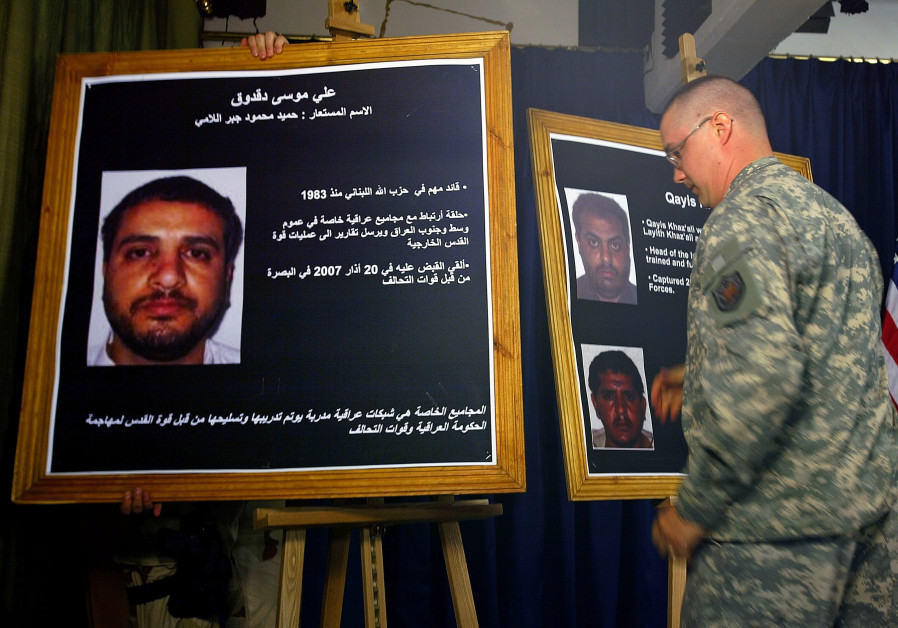“The Hezbollah terrorist organization has begun an attempt to establish and entrench a covert force in the Syrian Golan Heights that is designed to act against Israel when given the order,” the IDF said on Tuesday.
According to the IDF, the network – called “The Golan Project” – is currently in its initial stages of establishment and recruitment and is not yet operational.
It is led by senior Hezbollah commander Ali Mussa Daqduq, who spent five years in an Iraqi prison for a 2007 attack that killed five American soldiers in the Karbala Governorate. He was released in 2012, went back to Lebanon and was sent to Syria this past summer to establish the Golan terror network.

According to senior intelligence officers in the IDF’s Northern Command, Hezbollah’s Golan Project began in the summer following the reconquering of the Syrian Golan by regime troops.
All actions of operatives are compartmentalized and kept secret from each other and the local population to advance their project without the regime knowing.
“Hezbollah is taking advantage of the fact that Assad is busy in the north of the country and that villagers in the Syrian Golan need the money,” the senior officers said, stressing that “if Assad is serious then he has to have full control and know what is happening in his territory.”
The Hezbollah militants are currently focusing on familiarizing themselves with the Syrian Golan Heights and on gathering intelligence on Israel and the border area. They are also working to establish intelligence gathering capabilities against Israel, operating from civilian observation posts and regime military positions near the border.
The Golan Project has its headquarters in Damascus and the Lebanese capital of Beirut, and there are tens of operatives operating in the Syrian towns of Hader, Quneitra and Erneh who collect intelligence on Israel and military movement on the Israeli Golan Heights.
“The proximity of these communities to Israel is what allows the operatives to conduct observations continuously and without revealing their true goal – to convey information about the regular activities of our forces to Hezbollah and the leaders of the network,” the military said.
According to the senior officers, the operatives have weaponry available from the civil war and if needed, will receive additional weaponry from Lebanon or existing arsenals kept by Hezbollah and Iran in Syria.
While some of the operatives have taken part in attacks against Israel in the past, other local Syrian villagers joined for financial reasons. A portion of the operatives have undergone training by Hezbollah in sabotage, sharpshooting and firing Grad rockets.
“The Northern Command and the 210th Division have identified the enemy’s movements and are acting to strengthen the security response at the border by strengthening intelligence gathering capabilities, fire capabilities and are defending the sector with increased forces,” said Brig.-Gen. Amit Fisher, Commander of the 210th Division.
According to Fisher, IDF troops “are operating overtly and covertly to locate the enemy, force them away from the border and ensure security near the border.”
Last week, Syrian media reported that the IDF shelled Hader, and a similar incident occurred on February 11 with local Syrian media reporting that the IDF shelled a position in the city of Quneitra.
Prime Minister and Defense Minister Benjamin Netanyahu later admitted that the IDF had struck positions in Syria’s Quneitra district in February, stating that Israel is “operating every day, including yesterday, against Iran and its attempts to establish its presence in the area.”
Senior officials later admitted that the shelling targeted Iranian-backed Shi’ite militiamen who were trying to set up a base of operations near the Israeli Golan Heights.
Israel captured the Golan Heights, some 1,200 square kilometers, from Syria during the Six Day War in 1967 and unilaterally annexed it in 1981. The 1974 ceasefire accord signed following the Yom Kippur War the previous year established a buffer zone between the two enemy countries. It was patrolled by UN troops until peacekeepers were abducted by Syrian rebels 2014.
Syrian troops recaptured southern Syria seven years after losing the area to rebel groups and returned to its positions along with Hezbollah operatives. Both UN peacekeepers and Russian military police have been deployed along the Golan Heights border.
“We hold the Syrian Regime as the sovereign its territory and expect it to honor the terms of the 1974 Separation of Forces Agreement,” the military said on Tuesday, adding that “we expect it to prevent any hostile elements, including Hezbollah, from operating out of its territory. The IDF will not allow any attempt by Hezbollah to entrench itself near the border and we will act with all our might to force this terrorist organization out of the Golan Heights and ensure the stability of the region.”